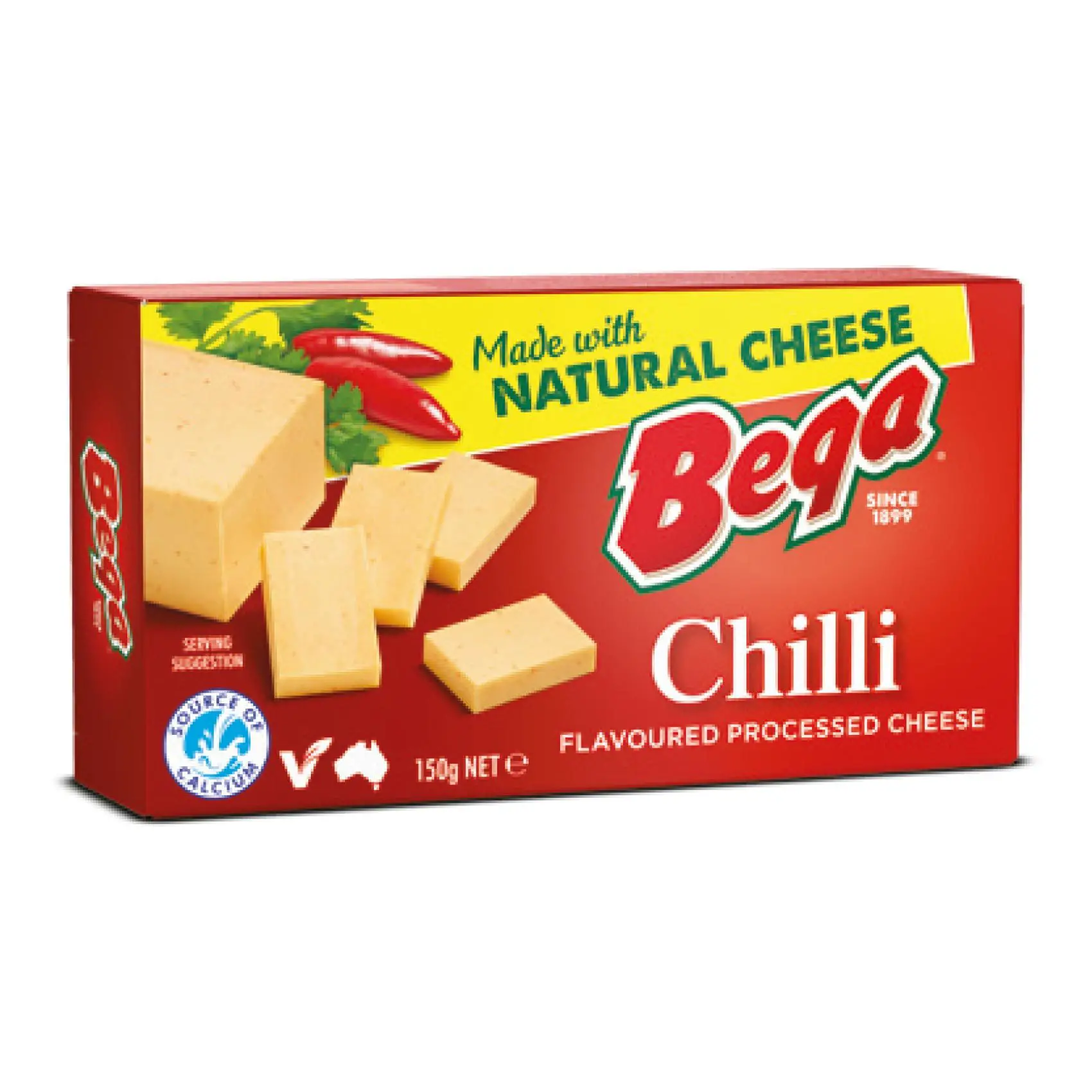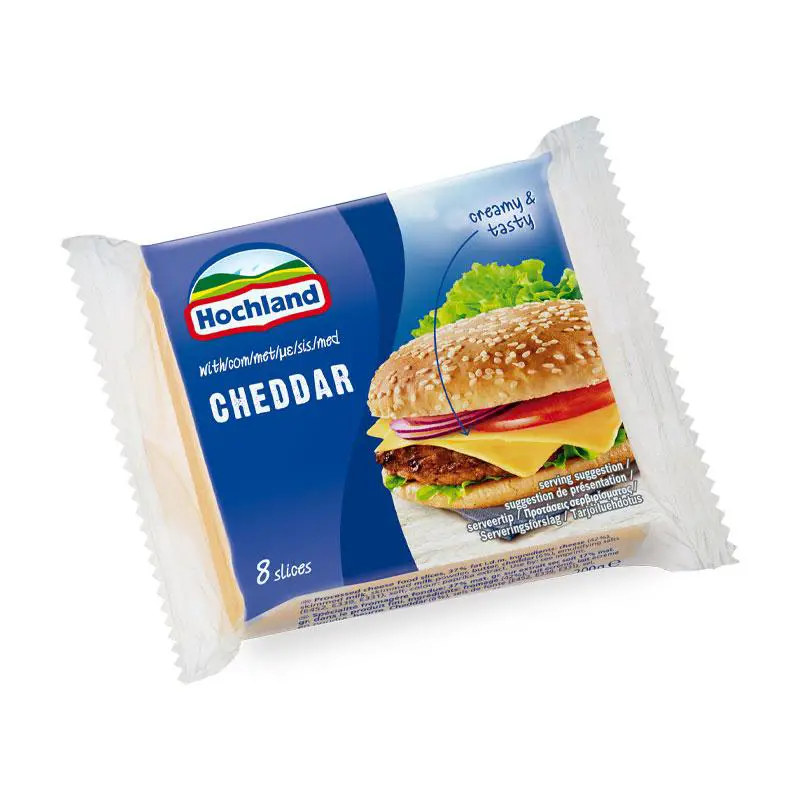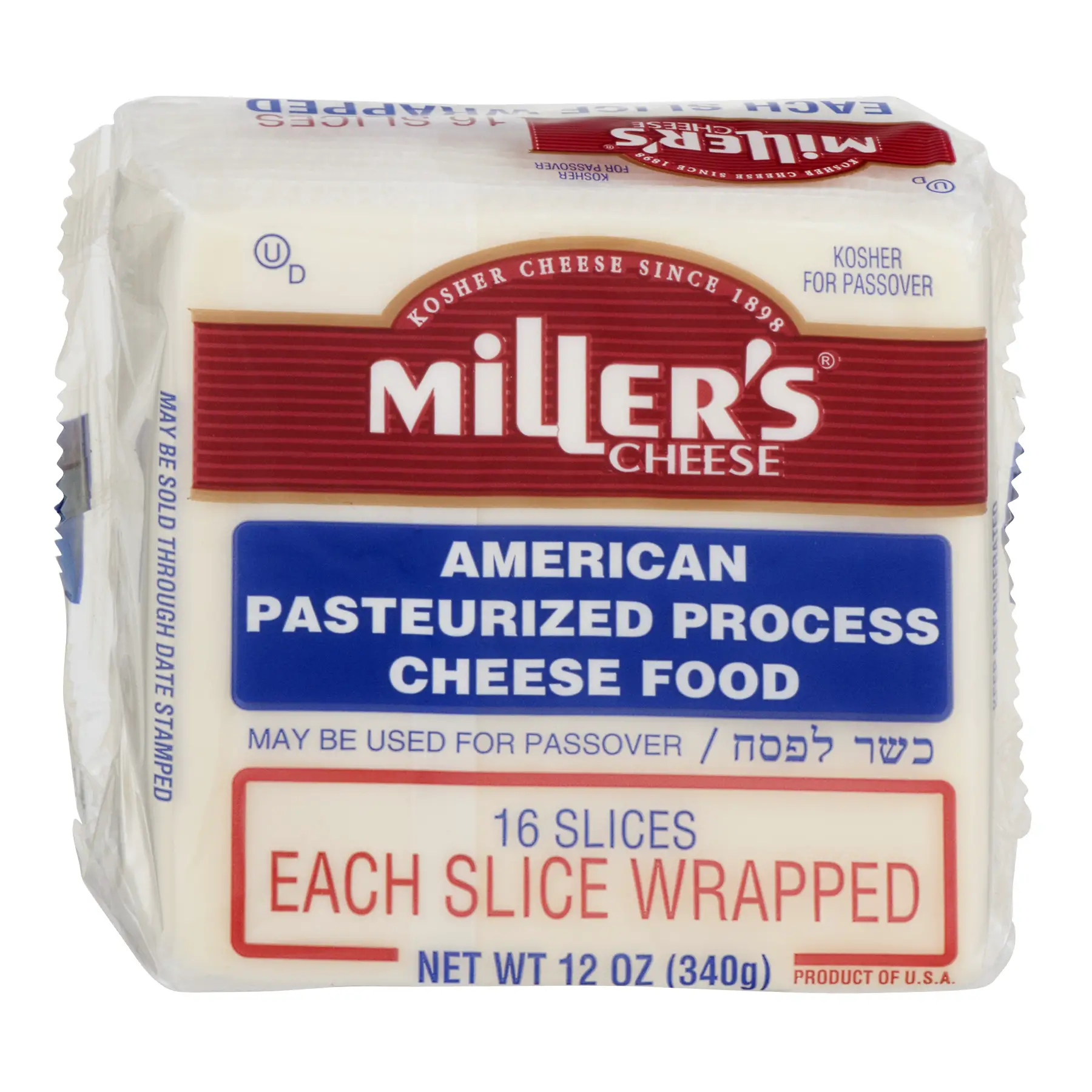Definition Types And Applications
Cheese is used directly as an ingredient in the preparation of an extensive array of culinary dishes in the home/catering sectors and prepared foods in the industrial sector . Natural cheese is also used extensively by the industrial sector in the mass production of so-called cheese ingredients, which include ready-to-use grated cheeses, shredded cheeses, cheese blends, PCPs, CPs and EMCs . These products are, in turn, used as ingredients by the manufacturers of formulated foods and, to a lesser extent, by the catering/food service industries .
Figure 4. Areas in which cheese is used as an ingredient in other foods or for the preparation of cheese ingredients.
Figure 5. Uses of cheese as an ingredient.
While any cheese may be used as an ingredient, the most widely used varieties include Mozzarella , Cheddar , fresh acid-curd varieties and pasteurized processed Cheddar .
The major cheese ingredients are described in more detail below.
Pasteurized Processed Cheese Products
PCPs are produced by comminuting, melting and emulsifying one or more natural cheeses and optional ingredients into a smooth, homogeneous, molten blend, using heat, mechanical shear and emulsifying salts. PCPs may be consumed directly as table cheeses or spreads, as a culinary ingredient or as an ingredient in formulated food products .
Dehydrated Cheeses and Cheese Powders
B.T. O’Kennedy, in, 2008
How Can I Avoid Processed Foods
In truth, unless you have a great deal of spare time and money, avoiding all processed foods is nearly impossible. And even if you cook everything from scratch using fresh ingredients, as you chop and heat them, by definition, youre processing them.
As weve learned, avoiding all processed foods is not necessary for good health. Many processed foods can be a valuable part of a healthy diet.
As for avoiding ultra-processed foods, that can also be challenging. Manufacturers design these products to be delicious and convenient, and they are marketed aggressively.
There is no need to eliminate them from your diet entirely, but replacing them with products that are less processed may benefit your health in the long run. Here are a few suggested swaps to get you started:
-
swap cold cuts for white meat or fish
-
swap cheese slices for minimally processed cheeses like cheddar
-
swap soda for water with fresh fruit, tea, or coffee
-
swap breakfast cereal for oatmeal
-
swap candy for trail mix
At ZOE, we know that everyone responds differently to food. For instance, a food that causes a large increase in blood sugar or blood fats for one person might hardly affect another. This is why personalized nutrition is important.
With the ZOE program, we provide nutritional advice tailored to your unique body, including personalized swap suggestions to help you replace ultra-processed foods with foods that better suit your body.
To find out more, take our free quiz today.
From Feta To American Slices A Ranking Of Cheeses By Healthfulness
Americans love cheese. While U.S. dairy milk consumption has fallen, cheese consumption keeps on increasing year over year. According to an Agriculture Department report from 2018, per capita cheese consumption increased to a record 37.23 pounds. If youre a die-hard cheese fan, youre probably consuming your mozzarella and ricotta with a side of guilt. After all, cheese has long gotten a bad rap because of its high saturated fat content, which is considered bad for heart health.
Research is starting to suggest, however, that the issue may be more complex. One study published in 2018 showed dairy fats such as cheese had a neutral-to-positive effect on the heart. A 2018 review from Harvard researchers concluded there was a null or weak inverse association between consumption of dairy products and risk of cardiovascular disease, though it said more research was needed. A study from the Lancet medical journal found dairy products such as cheese were linked to a lower mortality risk.
You May Like: What Is Pepper Jack Cheese Made Of
Nutrition Of Cheddar Cheese
Cheddar cheese contains about 402 calories in 100g
This cheese is rich in fats, particularly saturated fats. It is also high in cholesterol.
Cheddar cheese is a rich source of protein.
Apart from that, cheddar cheese is notable for its sodium content and has other minerals such as calcium, potassium magnesium and iron
It also has vitamins such as cobalamin, vitamin B6 and vitamin D.
Low In Nutrients And Fiber

Processing destroys nutrients and pulverizes or removes the natural fiber content of whole foods.
Antioxidants, vitamins, minerals, and trace nutrients of every imaginable variety are lost during the manufacturing of processed foods, and science doesnt yet know what they all are, or what they do.
Whether or not theyve been identified, these lost components result in gaps in your nutrition. Even if foods have been enriched, or claim added vitamins and minerals, these are often synthetic or inferior versions of the real thing.
Both soluble fiber and fermentable fiber play important roles in digestion and nourishment.
Much of the fiber in whole foods isnt digestible by our systems this type of fiber feeds the friendly gut bacteria in the large intestine, which ferments and digests it to provide prebiotics necessary for good gut health.
Soluble fiber can also help prevent constipation. Cultivating the proper environment in our guts helps keeps us mentally sharp, cheerful and well.
Read Also: Does Kraft Parmesan Cheese Need To Be Refrigerated
What Is The Healthiest Kind Of Cottage Cheese
The top five cottage cheese brands available on the market.
- Wegmans Organic Whole Milk Cottage Cheese.
- Good Culture Low-Fat Cottage Cheese.
- 365 Organic Cottage Cheese 4 Percent Milkfat.
- Daisy Cottage Cheese 4 Percent Milkfat.
- Breakstone Cottage Cheese 2 Percent.
- Breakstone Cottage Cheese 2 Percent. 365 Organic Cottage Cheese 4 Percent Milkfat.
Pasteurized Processed Cheese Foods
Processed cheese food resembles the above processed cheese but contains more moisture and less fat. Optional ingredients may be added, including dried whey, dried skim milk, lactose, and organic acids. The moisture content should not exceed 44% and the fat content should be not less than 23%. The processing temperature is normally 8590 °C and the pH of the processed product is 5.65.8. Processed cheese food has a softer body and milder flavor than processed cheese.
T.P. Guinee, in, 2016
Read Also: How Much Sodium Is In Provolone Cheese
Processed Foods To Cut Down On
When were busy or dont know what to cook, it can be easier to reach for a pre-prepared supermarket meal, thinking it may be a healthy option, but often, these types of foods are ultra processed, which can mean they’re high in sugar, salt or unhealthy fats such as artificial trans fats. A processed food means that it’s been altered in some way during the preparation, such as freezing, canning, baking or drying. While not all processed foods are bad for us, some of the more highly or ‘ultra’ processed variations should be minimised in the diet.
Here, we look at some of the worst offenders, and healthier alternatives.
This guide is part of our new Beyond Natural series, in collaboration with BBC Future, which is an exploration into the world of food processing. For more guides on this, visit our hub page.
Discover our full range of health benefit guides and read more about processed food. Learn how to cut back on sugar and lower cholesterol. You can also check out some of our easy healthy recipes from snacks to desserts.
Pasteurized Process Cheese Spread
Pasteurized process cheese spread is also similar to pasteurized process cheese. But the main difference is that pasteurized process cheese spread contains more moisture in order to be more spreadable.
For better water retention, binding agents such as gums and gelatin may be added in amounts not exceeding 0.8% of the weight of the finished product.
The US standards for these processed cheese varieties can be found here on Wiley.
Other references:
M. Wallert, K. Colabroy, B. Kelly, J. Provost . The Science of Cooking: Understanding the Biology and Chemistry Behind Food and Cooking. John Wiley & Sons, Inc.
V. Vaclavik, E. Christian Essentials of Food Science . Springer
A. Gouda, A. Abou El-Nour . Encyclopedia of Food Sciences and Nutrition . Academic Press.
Recommended Reading: Where To Buy Asiago Cheese
Definition Types And Applications Of Cheese As An Ingredient
Cheese is used directly as an ingredient in the preparation of an extensive array of culinary dishes in the home/catering sectors and prepared foods in the industrial sector . Additionally, natural cheese is used extensively by the industrial sector in the mass production of so-called cheese ingredients, which include ready-to-use grated cheeses, shredded cheeses, cheese blends, dried cheeses, PCPs, CPs, and EMCs . The latter products are in turn used as ingredients by the manufacturers of formulated foods and, to a lesser extent, by the catering/food service industries .
Figure 4. Sectors in which cheese is used as an ingredient in other foods or for the preparation of cheese ingredients.
Figure 5. Uses of cheese as an ingredient.
While any cheese may be used as an ingredient, the most widely used varieties include Mozzarella , Cheddar , fresh acid-curd varieties , and pasteurized processed Cheddar .
The major cheese ingredients are defined in more detail below.
Pasteurized Processed Cheese Products
PCPs are produced by comminuting, melting, and emulsifying, into a smooth homogeneous molten blend, one or more natural cheeses and optional ingredients using heat, mechanical shear, and emulsifying salts . PCPs may be consumed directly as table cheeses or spreads, as a culinary ingredient, or as an ingredient in assembled and formulated food products.
Dehydrated Cheeses Ingredients
Dehydrated cheese products may be arbitrarily classified into four categories:
Is Cottage Cheese Good For Your Gut Health
Why it is beneficial to you: Cottage cheese is a terrific choice for those who enjoy cheese since it is good for your tummy. Cottage cheese, like other fermented foods, typically contains probiotics , and it is high in calcium, which is vital for maintaining healthy bones. Cottage cheese is a good source of calcium.
Read Also: Where To Get Vegan Cheese
What Are Highly Processed Foods
Nearly all foods are processed, at least to some extent. For example, manufacturers process dried beans to make them shelf-stable. This does not make them less healthy.
So, before we get into what makes a food highly processed, its important to understand that foods arent unhealthy just because theyre processed in some way.
To make it easier to understand food processing, researchers have separated foods into four categories based on the extent of processing.
To do this, they used NOVA, a food classification system developed by researchers at the University of Sao Paulo, Brazil :
- Minimally processed and unprocessed foods. Vegetables, fruits, grains, beans, and nuts fall into this category. These foods may have gone through roasting, boiling, or pasteurization to increase shelf life or make them safe to eat.
- Processed culinary ingredients obtained directly from group 1 foods or from nature. This can include foods such as olive oil, maple syrup, and salt. Group 2 foods are mainly used in preparation and cooking of group 1 foods.
- Processed foods, including items made by adding ingredients like salt, sugar, or other substances from group 2 to group 1 foods. Examples include fresh bread, fruits in syrup, and cheese.
- Ultra-processed foods. These contain little, if any, of the foods or ingredients from group 1. These items are meant to be convenient, hyper-palatable, and low cost and are typically high in sugars, refined grains, fats, preservatives, and salt.
Cheddar Cheese Vs Processed Cheese

Apart from being natural, cheddar cheese has several other differences from processed cheese.
The texture of processed cheese varies while cheddar cheese is firm.
Cheddar cheese is produced using natural ingredients while processed cheese is made from one or more varieties of cheese including cheddar cheese and other artificial ingredients.
Often, a stabilizing agent is included to prevent processed cheese from separating as it melts while cheddar cheese is lumpy as it melts.
Cheddar cheese is left for months to age following which they acquire a different taste, processed cheese is not left to age.
Processed cheese also has a longer shelf life.
Don’t Miss: Why Is Babybel Cheese So Expensive
How To Keep Sugar In Check
As with salt, you can control how much sugar you get by reading labels. For a 2,000-calorie diet , you should aim for less than 50 grams of added sugar, or 200 calories, each day . Check the ingredients, too. Certain ones should give you pause. These include corn syrup, high-fructose corn syrup, honey, agave nectar, cane sugar, evaporated cane juice, coconut sugar, dextrose, malt syrup, molasses, and turbinado sugar.
What To Watch For: Trans Fat
Found in processed foods like baked goods, salty snacks, and margarine, trans fat can affect your cholesterol and lead to inflammation thatâs linked to heart disease, stroke, and other conditions. Recent government rulings have made trans fat increasingly difficult to find, but read labels: More than 5 grams per 100 grams of serving size is high. Also know that even if a product’s label says it has 0 grams of trans fat, it can have up to 0.5 grams of it.
Also Check: How To Make Vegan Macaroni And Cheese
Avoiding The Worst Cheeses
What Is Processed Cheese And Should We Eat It
In the world of alt-flour this and activated charcoal that the word processed sounds like the gnarliest of curse words, the kind we once whispered on the playground to see what would happen. We hear the word processed a lot, often in reference to various forms of vibrantly-hued cheese. But what is processed cheese, anyway? Is it really…not as good as real cheese? More artificial? Less healthy? We kind of know a lot of stuff about it, but lets take a minute to set the record straight.
Processed cheese is not 100% cheese. Most of the time it hovers around 50% cheese, sometimes more and sometimes less, but at a base level, processed cheese is real cheese cut with other, non-cheese ingredients. Those extra ingredients can include salt, food dyes, preservatives, extra dairy, emulsifiers, or other artificial ingredients. These ingredients are added to melted, pasteurized cheese, which is then converted to a sliced solid, a jarred sauce, a spread, a spray, or maybe even some little oil cartridge you put in a vape and inhale. . By the time the extra ingredients are added, the actual cheese in the mix has changed significantly in terms of both flavor and texture.
What it comes down to is that grocers and distributors dont have to care for processed cheese in the same way that they do for real cheese. Its cheaper for the producer, the seller, and the consumer. Its about money and time.
Sweet, sweet Velveeta.
OK. A burger sounds pretty great, right about now.
Don’t Miss: How Much Does Chuck E Cheese Cost Per Person
Pasteurized Process Cheese Food
Pasteurized process cheese food is very similar to pasteurized process cheese in terms of ingredients and manufacturing process. Although there a few differences. Generally, pasteurized process cheese food contains more moisture, less fat, and has a lower pH.
An emulsifying agent may be added provided that the weight of the solids is not more than 3% of the weight of the pasteurized process cheese food.
Pasteurized process cheese food may contain optional ingredients such as non-fat dry milk, cream, non-fat milk, whey, and other coloring and flavoring agents.
In terms of quality, pasteurized process cheese food has a milder flavor, softer texture, and melts readily.
You might also like: Everything You Need To Know About Lactose Intolerance
Whats The Difference Between Minimally Processed And Ultra
The term processed food has a bad rap, but cheese and fresh bread are both considered processed, so dont always assume the worst. The food classification divides the foods we buy into four groups, from unprocessed to ultra-processed but it may not always be clear which is which when youre in the shops.
Don’t Miss: How To Make Melted Cheese With Shredded Cheese
Group One: Unprocessed And Minimally Processed
Unprocessed and minimally processed foods make up 30 per cent of the calories eaten in a typical UK diet.
Unprocessed foods include fruit, vegetables, nuts, seeds, grains, beans, pulses and natural animal products such as eggs, fish, milk and unprocessed meat.
Minimally processed foods may have been dried, crushed, roasted, frozen, boiled or pasteurised, but contain no added ingredients. They include frozen fruits and vegetables, frozen fish, pasteurised milk, 100 per cent fruit juice, no-added-sugar yoghurt, spices and dried herbs.
American Cheese Vs American Slices

A similar product, which is marketed as “American slices,” is often confused with American cheese since the product looks similar. But American slices aren’t cheese, and can’t use the word “cheese” anywhere in its labeling. The difference is that American slices are made by blending milk proteins with vegetable oil to produce a product that resembles American cheese and has similar melting properties.
Another similar product is basically Velveeta that is formed into individual slices. This product is termed “process American cheese food,” as opposed to “process American cheese.” Kraft Singles are an example of this product. Basically, if the label says “American cheese slices” or “pasteurized process American cheese,” or “processed cheese” , then it’s real cheese, but if it just says “singles” or “American slices,” or “sandwich slices,” it’s something else. Likewise, if the first ingredient is “American cheese,” it’s cheese, but if the first ingredient is milk or water, it’s not.
Read Also: Where To Buy Kraft Three Cheese Ranch Dressing
